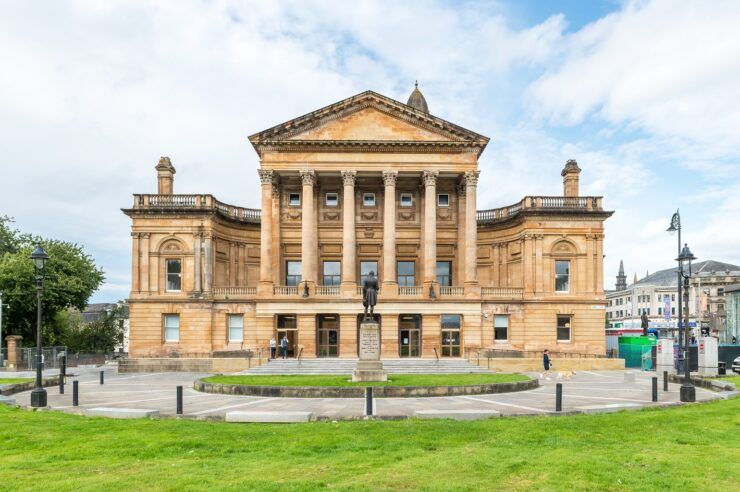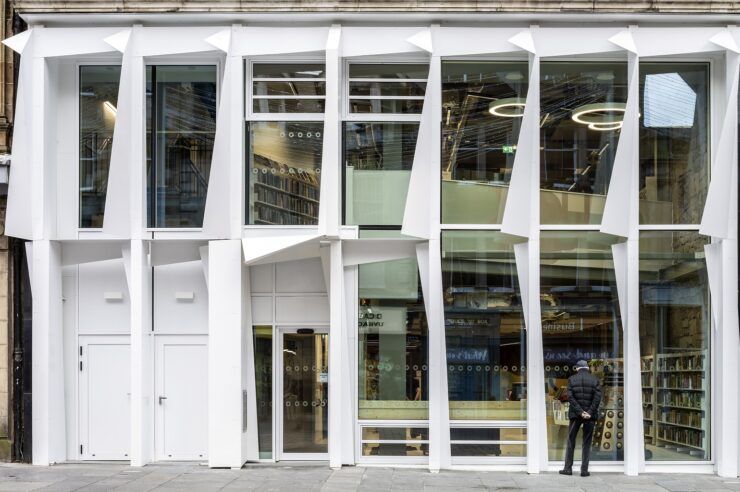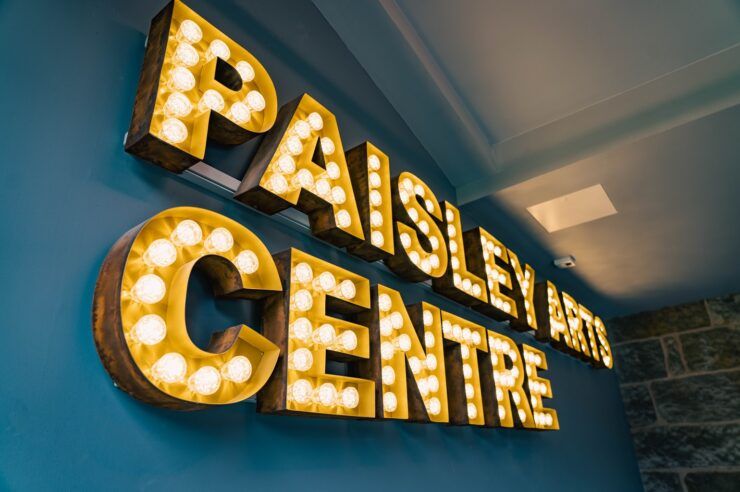The £45 million Paisley Museum will be a new, world-class museum space. Shaped by and for the people of the town.
It will celebrate Paisley’s history and impact on the world. It will also be a community space that’s open and accessible to all.
At its core, the museum will bring history to life. Connecting it to today’s town and people. Creating a vibrant and colourful new cultural thread. Weaving together past, present and future
The museum will celebrate the area’s significant industrial past and the town’s importance, not least in textiles, weaving and the famous Paisley Pattern.
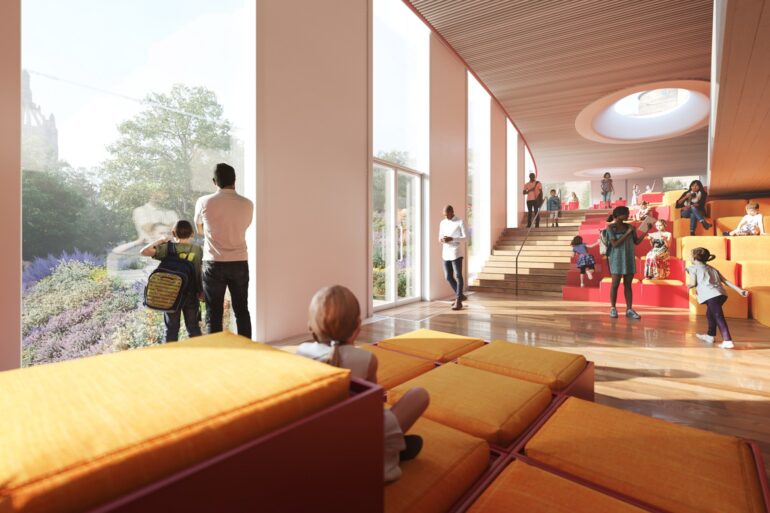
The refurbished museum’s gallery spaces will increase by more than a quarter. Ambitious architectural and engineering interventions will welcome visitors to stunning indoor and outdoor spaces.
The museum refurbishment is funded by Renfrewshire Council, the Scottish Government, the National Lottery Heritage Fund and Historic Environment Scotland. A charitable fundraising campaign has been supported by a number of trusts, foundations and corporate donors.
At the heart of Paisley
The museum will be at the heart of Paisley and Renfrewshire. It will be a social and community hub; a multi-use building, located in the High Street and connected to its neighbours. Part of the wider, culture-led regeneration of the town.
A team of expert content producers and collections specialists have taken a radical and dynamic approach to Renfrewshire’s core collections. Working from the town’s Secret Collection, the team have worked on over 100 story displays featuring 1,290 objects.
With eight new public spaces, Paisley Museum will be filled with 60 digital displays and home to a new garden gallery, public courtyard, café and picnic areas. Coats Observatory – the oldest public observatory in Scotland – will be open and accessible to the public. It has a rich and vibrant history as both civic timekeeper and a truly remarkable, 150-year-old weather station.
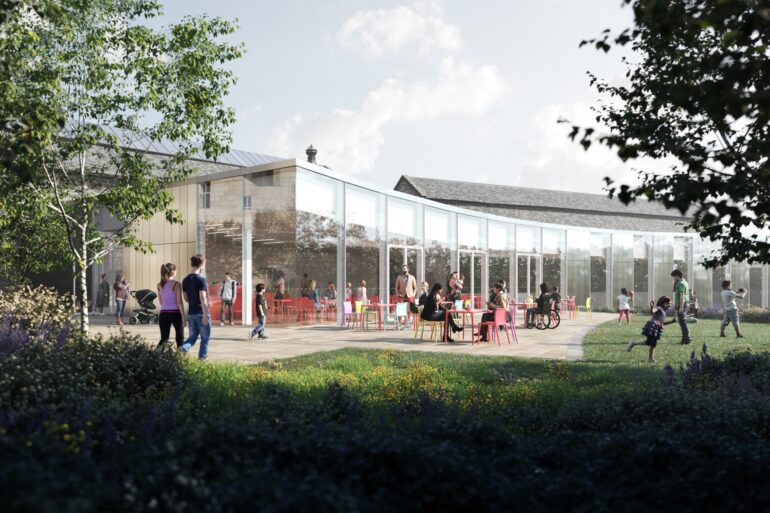
The building redesign is by architects AL_A, whose previous work includes the MAAT contemporary museum in Lisbon and the Exhibition Road Quarter at the V&A in London.
The entrance building in red glass will be one of the first design features the public see. It is contemporary, radical, unique to Paisley and brings colour to both the inside and outside of the museum. It clearly announces a new way into the museum.
Fast facts
There will be:
- A new public courtyard bringing the museum out onto the High Street – a space for the Paisley community, and for events.
- A new way in frames views of the historic galleries, celebrating John Honeyman’s original design.
- New lifts and step-free access to galleries on all levels of the building.
- New galleries in the former library building and new connections into the museum.
- A 26% increase in gallery space.
- 100’s more objects on display and more digital displays than ever before.
- Almost twice as many learning spaces.
- New community-making spaces.
- New social spaces and digital hubs.
- New roofs and services for maximum environmental sustainability.
- Restored historic fabric and finishes.
- A new shop and a fantastic new café, opening onto and looking out across new museum gardens and woodland.
- A new observatory garden with ramps providing step-free access between the museum and the observatory.
- Public access to Transit House (which defines Paisley’s very own Greenwich meantime) for the first time in decades.
